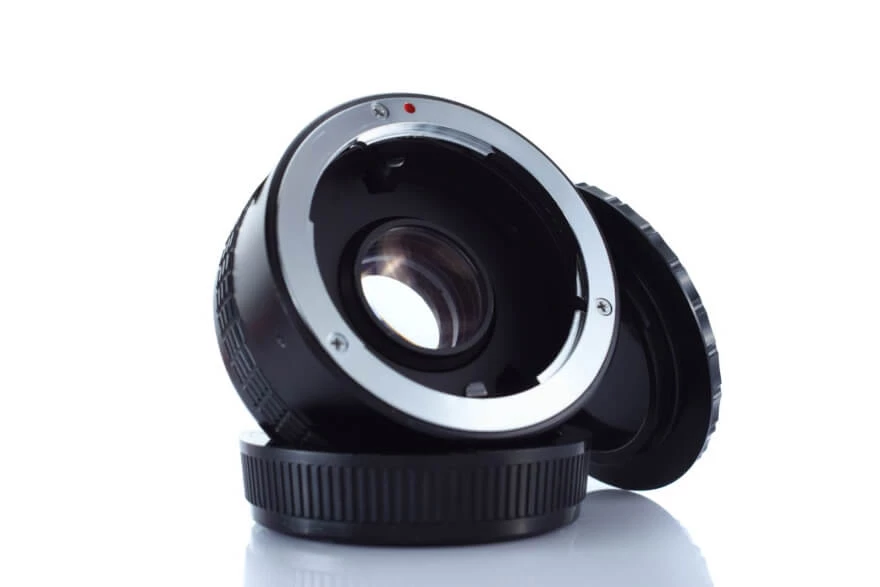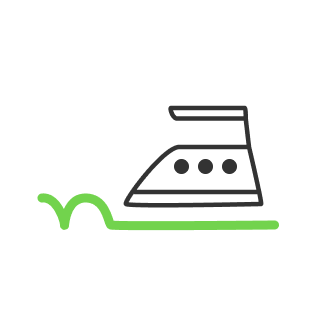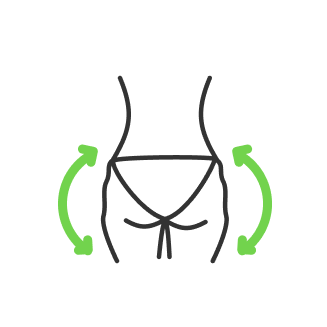What is a Teleconverter?

- What is a teleconverter lens, and how does it work?
- Benefits of Using a Teleconverter
- How to pick a teleconverter?
- How to Calculate the Effective Focal Length with a Teleconverter
- When and Where to Use a Teleconverter Lens
A teleconverter, also known as an extender, is a lens attachment that increases the focal length of a camera's existing lens. This makes it easier to capture distant objects with greater detail and resolution than what would be possible with just the regular camera lens.
What is a teleconverter lens, and how does it work?
A teleconverter lens is a specific type of camera lens designed to increase the focal length of an existing one. It works by magnifying the image that is projected onto the imaging sensor, allowing for longer-distance shots with much more detail. Teleconverters come in different magnification ratios, usually ranging from 1.4x to 2x, and have varying levels of compatibility when used with different cameras or lenses. To determine whether a teleconverter will work properly with your specific camera and lens combo, you should consult a teleconverter calculator which takes into account the specifications of both components. Another important aspect that any photographer want is the sharpness of the image. It is achieved by using higher-quality teleconverters. The better the quality, the lower levels of the distortion you can achieve.

Benefits of Using a Teleconverter
The main benefit of using a teleconverter lens is in capturing distant objects with greater detail and resolution. This makes it perfect for photographers who need to capture wildlife or other far-off objects. Besides, teleconverters are relatively inexpensive compared to buying a new camera lens, making them a good choice if you need to upgrade some gear without breaking the bank. Teleconverters offer great flexibility when shooting since they can be attached and detached from compatible lenses almost in a blink of an eye.
Benefits of Teleconverter Lenses:
- Increase the focal length of existing lenses
- Capture distant objects with higher detail and resolution
- Relatively inexpensive compared to buying a new camera lens
- Preserve image quality due to lower magnification ratios
- Flexible during shoots due to easy attachment/detachment
Disadvantages of Teleconverter Lenses:
- May cause image degradation when used with non-compatible lenses or cameras
- Not ideal for low light photography due to increased f/stop value (i.e., slower shutter speed)
- It cannot increase the maximum aperture size or angle of view as a longer focal length lens can
Types of Teleconverters Available:
- Canon Extenders
- Nikon Teleconverters
- Sony Teleconverter Lenses
- Sigma Teleconverter Lenses
- Tamron Teleconverter Lenses
- Pentax Teleconverters
- Olympus Telephoto Converters
- Panasonic Lumix G-Series Lens Extensions & Adapters
- Voigtlander M/L Mount Zooms & Adapters

How to pick a teleconverter?
When selecting a teleconverter, it’s important to consider several factors: the magnification ratio, compatibility with your camera and lens, and your budget. Teleconverters typically come in 1.4x, 1.7x, and 2x ratios which offer different levels of magnification power. Be sure to check your camera and lens for compatibility before purchasing a teleconverter. If you are tight on a budget then be sure to compare prices from different manufacturers as there can be considerable variation between brands and prices.
Do not hesitate to use teleconverter calculators to help you determine the right pick for you. The calculator will allow you to input the original lens' focal length and the power of the teleconverter to give you an estimate of your effective focal length.
Overall, teleconverters are great additions to any photographer’s kit, as they offer a cost-effective way to increase your effective focal length without having to buy a new lens. They can be used both in daylight and low-light conditions. If you take into consideration all the factors mentioned above, you will definitely find the right teleconverter lens that fits your needs and budget.
How to Calculate the Effective Focal Length with a Teleconverter
Calculating the effective focal length with a teleconverter lens is fairly easy. All you need to do is multiply the original camera lens's focal length by the power of the teleconverter (usually 1.4x, 1.7x, 2x). For example, if you have an 18-55mm lens, and you attach a 1.4x teleconverter, then your effective focal length would be 25.2-77mm (18 x 1.4 = 25.2; 55 x 1.4 = 77). It’s important to remember that when using a teleconverter, you will also get a decrease in light transmission due to its magnification power. This means that your camera will require a slightly longer shutter speed or higher ISO in order to compensate. Therefore, it’s important to consider the light conditions of your shooting environment before using a teleconverter.

When and Where to Use a Teleconverter Lens
Teleconverter lenses are best used for distant objects. This is because the increased magnification power of a teleconverter lens allows you to capture more detail than what could be achieved with a regular camera lens. The most common places to use a teleconverter are wildlife, sports events, sceneries, and others.
In conclusion, a teleconverter lens can be very beneficial for photographers who shoot at extreme/long distances. You can save yourself some money and perform the right job when using a teleconverter. Take into consideration all the tips mentioned above and do not hesitate to use this magnificent tool as it is almost essential for any photographer. However, if you are still left with a question — how do I retouch my picture in no time? The answer is simple. You do not need to use expensive products and learn how to become a professional photographer. Try out some great and cheap retouching apps, such as RetouchMe. It will help you with any task you have regarding your photos. Do not hesitate and try it out today!
Co-founder of RetouchMe. In addition to business, he is passionate about travel photography and videography. His photos can be viewed on Instagram (over 1 million followers), and his films can be found on his YouTube channel.
Moreover, his profile is featured on the most popular and authoritative resource in the film industry — IMDb. He has received 51 international awards and 18 nominations at film festivals worldwide.

with RetouchMe














